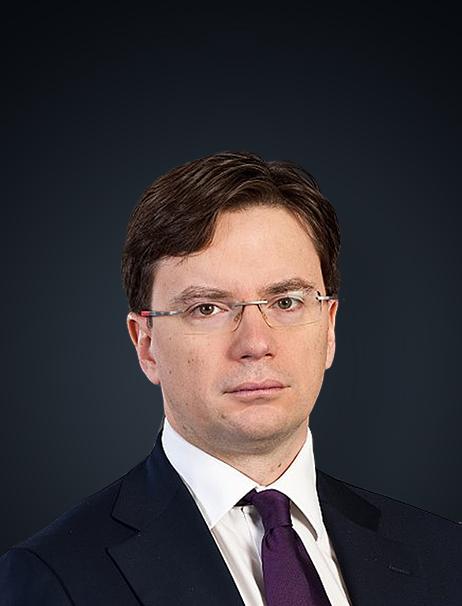Living in the mainstream for battery storage
The last five years have seen a huge increase in the number of installations of battery storage systems – and an increase in financing volumes for the asset. Proximo asks a panel of industry experts whether policies and technologies are robust enough to maintain this momentum.

Supported by
Energy storage in its broadest sense has a long history in project finance. From the boom in pumped storage hydroelectric projects late in the last century, to the gas storage build out that took place from 2000 on, developers have looked to raise capital against the arbitrage opportunities and network reliability services that storage provides.
More recently, over the last fifteen years, renewables developers have incorporated storage elements into their generation projects. Wind farms connecting to smaller grids were early adopters of battery technology, while concentrating solar plants usually featured some kind of storage medium, often molten salt.
But as lithium-ion technologies improved – in large part thanks to their use in electric vehicles – their potential for assisting with grid stability and ease of integration with renewables improved. The technology has attracted increased attention from financial sponsors, and project financings for the technology are slowly getting longer and cheaper.
Does this mean battery storage has become mainstream? Proximo gathered a group of development, financing and advisory specialists to discuss whether there is still a policy impetus towards greater use of storage, whether project finance lenders still need to do more to get comfortable, and whether every self-respecting sponsor needs storage in its portfolio.
Participants:

Emily Arnold: Vice-President, Engineering, 8minute Energy

John Breckenridge: Senior Managing Director and Head of Clean Energy Infrastructure, Capital Dynamics

Daniel Dedrick: Head of Project Technical Services, Clearway Energy

Mark Hardin: Senior Energy Storage Consultant, Leidos

Aaron Klein: Managing Director, Investment Banking, KeyBanc Capital Markets

Stefano Mion: Senior Managing Director and Co-head of Ardian Infrastructure

Louise Pesce: Managing Director, MUFG

Lee Van Atta: Managing Director, Leidos
Proximo: Has there been an increased policy focus on grid reliability in the wake of recent issues in the Texas market, and is that feeding through to more bankable and investible storage projects?
Aaron Klein: I think when you have an event like what happened in Texas, it draws a lot of people's attention to it, and when there is more focus, hopefully it will spur action. I think what's going to increase the supply of projects is if policymakers start compensating generators properly for providing the resource adequacy (RA) and other services necessary to help prevent another serious grid reliability event. like that. – and I think you'll see more and more projects as we deploy more renewables on the grid.
Proximo: Is the policy response going to be different depending on the stage of deregulation in various markets?
Aaron Klein: I think it depends on how close it hit to home. People in Texas are a little more focused on it compared to PJM, where issues with capacity markets and MOPR [minimum offer price rule] are frontal lobe these days.
Lee Van Atta: Texas leaders have a lot to unpack around what happened with the winter storm event, which went on for multiple days. But a stronger link between reliability events and a focus on batteries can be observed from last summer in California. California already had a significant level of mandates and policy focus around energy storage, and that seems to have been amplified in response to the problems they had last summer. There’s a strong relationship between renewable penetration and what that does to the grid and market prices, and that's where you start to see opportunities for energy storage. Ancillary services were designed without batteries in mind, so there's a need to catch up in competitive markets, and we need leadership from FERC. Energy storage will fit right into the Biden administration’s renewable goals as well. Outside of the competitive markets and California, particularly in the south-east, the process is really driven by the utilities and what their ratepayers want to see in the generation mix.
Stefano Mion: I think we should recognise that the Texas event would not have been solved by batteries because on the second day there would not be energy to charge a battery, though you might have a small benefit on the first day. I’m a big believer in batteries, but they are there to help you shave the difference between production and consumption during the day on a reliable network. But they don’t help you create a reliable network for emergency events like that one.
Proximo: Stefano, given your background in Canada, where did the push come from to get battery storage going there?
Stefano Mion: That was more about dealing with the consequences of an earlier uneconomical contract. It resulted in what was effectively a tax at certain times of year. Batteries were a commercial solution to a technical problem, to avoid pushing large users off the grid.
Louise Pesce: There's such a patchwork of regulation in the US that it's tough to say exactly what will drive battery storage. Also it’s Band-Aid regulation, rather than recreating systems for new renewable generation, because most were designed for baseload nuclear, coal, hydro and dispatchable gas. There needs to be a wholesale redesign of market systems and incentives to drive battery storage, although current four-hour battery storage is not on its own the ultimate long-term solution.
Emily Arnold: Attention to grid reliability creates opportunities for both standalone storage and PV plus storage projects, but revenue stream certainty and market structure have to keep up. Four-hour batteries are not the end of the story - long duration will be needed, and not every storage project should look the same.
Proximo: What can states and regions do to get battery storage deployed more quickly. Is it just a question of very, very generous and bankable RA contracts? PPAs with storage built in?
Emily Arnold: I would point to improved market structures that target to really compensate facilities with storage for the reliability and flexibility that they provide, such as having ways to access and monetize stacked revenue streams and features such as energy shifting, ancillary services, RA, flex RA, and being able to optimize inertia in real time markets. There is so much that storage and PV plus storage can do, that is not being considered as there isn’t certainty around the revenue streams. I think longer duration RA contracts could be helpful with this as well. Additionally, utilities setting realistic and forward-looking procurement strategies, becomes critical, while currently utilities are often responding to what has happened in the previous year. A PV plus storage project takes more than a year to develop, design, permit and put in the ground, so local utilites having realistic and thoughtful forward looking resource planning and procurement guidance becomes very important to the process, so we can target projects that meet their needs. Finally I’d like to mention interconnection, because a lot of studies are still contemplating how to access hybrid PV plus storage project, and currently may not reflect how the plant will be operated.
Proximo: Can a merchant market structure ever be supportive of batteries, or does storage really need contracts?
John Breckenridge: Well there is RA in California, but that's a very small percentage of the revenue of a battery, so that market is working. One of the concerns I have is that policymakers will they try to solve all kinds of things with storage that it is not really designed to solve. In California, as solar hit a certain level of deployment intermittency increased exponentially and storage works for that. In many parts of California storage doesn't even require the ITC [investment tax credit]. RA is only a small part of how you do storage. But there are markets where storage can be effective without subsidy and without long-term contracts, where the returns are higher, and bankers are interested in lending even though it's merchant.
Daniel Dedrick: I think we’ll hear more about utilities being overwhelmed on the transmission side, and all the work that they need to do to accommodate all these markets working because of all the storage being brought online. As an industry we will need to develop strategies to ensure that transmission upgrades and other upgrades that are in the utilities’ scope can be done.
John Breckenridge: One of the concerns that we have is that if storage deployment in California happens too fast, those issues are going to become bigger, because utilities don't know how to deal with charging and the rules don't really always make sense. If the rules are detrimental to deploying storage then hopefully a gradual implementation will allow utilities to figure all that out. But a flood of storage that hits the system at once because it's so highly incentivized is going to exacerbate the problem.
Mark Hardin: We’re starting to see, if not standardisation, then more commonality in terms of requirements in storage contracts, and rules. Most questions I get about storage tend to get the answer “it depends”, because even in RA contracts the use case changes, or the duration is different, or the way charging is treated is different. It’s a big ask, but I’d love there to be a convergence on requirements and performance standards, so we could go through PPAs and understand, for instance, what the liquidated damages position is.
Proximo: Where might RA contract terms be improved?
John Breckenridge: The RA contract has worked pretty well, and even if it's not the big driver of economics in California, it's an important foundation. But we see contract lengths – the most valuable aspect - getting shorter. But I am worried about how fast deployment is happening in California. There’s a significant shortage of batteries, the ITC is coming, and by offering larger RA contracts we might pour fuel on the fire.
Daniel Dedrick: I think RA will continue to be a backbone, but we need to think about other types of RA than just the four-hour battery, as it’s currently defined in CAISO.
Louise Pesce: RA does provide a stable revenue stream, but it is not the only source. We see stability from number of revenue streams including fixed shape offtake products, upon which to base a long-term loan financing.
John Breckenridge: In the long run, especially if batteries stabilize intermittency, they kill their own economic story. I think batteries are going to end up being more of a transmission and distribution asset, and be financed that way, because the economics of intermittency mean that if batteries are successful, they are ultimately going to decline, though they will still be needed.
Proximo: Has there been a shortening in the length of RA contracts and does that reflect regulatory pressure?
John Breckenridge: I think regulators are looking to minimise long-term RA because they see that the problems that batteries are solving today are not necessarily the problems they will need to solve in 20 years.
Lee Van Atta: There is some effort towards standardization, around the concept of ELCC [effective load carrying capability]. Our modelling has shown that a four-hour battery does provide a large degree of reliability and can be considered a capacity resource in most markets. But as battery capacity on the system increases, the net peak load is flattened and you get diminishing returns. So ELCC, if adopted and managed well, could lead markets to value longer duration storage better. Still, the four-hour battery, at least today and probably for some number of years in the future, is still likely to provide a real value to these systems.
Aaron Klein:The length of the contract and the certainty of the dollar amounts behind it are going to determine the amount of leverage at the end of the day. Senior lenders will not try and guesstimate, on a stand-alone basis, where that merchant market is seven, 10, 15 years in the future, that’s equity risk. The more certainty there is around revenue, the lower the cost of capital, whether that's moving from equity to mezz or to a senior lender. Or you can try and reduce capital costs, for instance through an ITC, though I really hope it will be refundable, because the tax equity market is a real bottleneck right now.
Proximo: What are the other revenues that projects hope to capture? And how do you communicate the value of those revenues to lenders?
Lee Van Atta: Storage can appear at so many different points on the grid, even at the end user, where you can affect the entire value chain, whether though demand charges offset for the customer, or helping manage issues that the utilities are facing with transmission and distribution. The wholesale market on the generation side generally comprises energy, capacity and ancillary services. Adding batteries to solar or wind projects to create hybrid renewable energy plus storage resources creates some additional opportunities. Wholesale markets like California and ERCOT are pretty well-defined, with day ahead and real time energy pricing. You can model capturing the energy arbitrage or peak pricing, though there is always some friction that makes it harder to capture that arbitrage in practice than it is in theory. You can look at the historical information from these well-established energy markets to get a sense of the value from energy arbitrage going forward as well. There have been very strong energy arbitrage values for four-hour or even shorter duration batteries in California in recent years, and we think that's going to continue, given the duck curve is not going away. Batteries can be very effective in providing ancillary services, like voltage regulation or even spinning reserves. The issue with ancillary services markets is that the ISOs are procuring them at very small levels relative to the size of the energy markets. This makes reliance on ancillary services more of a risk from our perspective. Finally, in addition to energy arbitrage and ancillary services value, a four-hour battery is likely to qualify for either all or a very high percentage of its nameplate capacity to earn capacity value. For example, in PJM, which historically was not very supportive of battery storage as a capacity resource due to the “10-hour rule”, ongoing implementation of ELCC will enable meaningful participation of four-hour duration battery storage in the PJM capacity market going forward.
Proximo: Are these revenues easily communicated to lenders?
Stefano Mion: Trying to apply project financing schemes to batteries is not always obvious, which makes lenders’ life a bit difficult. But there is a long-term optionality attached to being connected to the grid – you just need to educate regulators and operators that batteries are now a long-term integral part of the system. You will see a lot of models showing that there will be arbitrage opportunities between years 10 and 20, and that’s worth questioning. But there’s no doubt that batteries have a long-term value providing stability to the system.
Proximo: I’d like now to hear about people's perceptions of technology and construction risk
Louise Pesce: Lenders will be looking for a top tier supplier such as CATL, Tesla, Samsung, Panasonic, BYD, or LG, because of their experience, reliability, warranties and hopefully supply chain management. Lenders want comfort that the technology can operate in accordance with its guarantees and offtake requirements, particularly how the degradation curves stack up with augmentation plans, or whether project is overbuilt to start with. They will want to make sure that the project can perform through the term of offtake agreements. You don't want a start-up supplier in place for that.
Aaron Klein: Storage is still in its early innings and there isn’t much operating history to look at. But assets need to perform according to their spec sheets, assuming they are used properly, and if they don’t we need someone in place with the experience and wherewithal to fix it.
Daniel Dedrick: We’ve pushed our suppliers to develop solutions which reduce our execution risk, and a perfect example of this is equipment innovation. One of the things we learned very early on was that the cost and risk associated with the in-field integration of batteries is quite high. We now have a very nice selection of productized, factory assembled, factory tested solutions that are low cost and low risk.
Emily Arnold: We push for a data driven approach on newer technology targeted on testing. While we believe there can be a benefit to using top tier manufacturers, we also know technology and the market is moving quickly, and depend on a data driven approach so as an industry we don't miss out on the ability of suppliers or tech to leap frog, using lessons learned from deployments to date. We aim to have the flexibility to upgrade and augment systems as the technology improves, as this is beneficial to long term owner, by pushing for equipment compatibility with the newer technology that are being developed.
Louise Pesce: There is maybe a little bit of a friction point there because lenders do like to see long-term service agreements or maintenance plans, and those may not work with that flexibility. It may be difficult to flexibly augment a system when you are locked in under an LTSA.
Proximo: Is there much of a hinterland of second tier suppliers in this market, and can they use third-party support to reassure lenders?
Daniel Dedrick: We value key long-term suppliers and all of our projects are third party financed. While we do have long-term services agreements with bankable suppliers, we also make sure that we're prepared to self-perform operations of those systems if needed. And we make sure our capacity maintenance strategies are technology agnostic, which we think helps de-risk the operations of these systems.
John Breckenridge: The early issues with equipment failures and fires at sites – in the US and Korea – were mostly linked to system integration. There’sbeen this pivot to modular systems, which is absolutely where the industry should be, But the actual deployment of those modular systems is very, very small, and there’s very little operating experience. So you need to look for a top-tier supplier. It's very easy to get that long term contract from a vendor today, which tells me that they're very confident that costs are going to come down and that continuing to replenish these batteries is a good business. At some point there will be less of a mystery, we’ll see how much money they’re making on those contracts, and then there will be the ability to service or use third parties.
Mark Hardin: Operational history is important, even if it is a previous generation battery deployed in a new modular enclosure. It's very hard even for big battery companies primarily serving the electric vehicle market to break into the storage market. Because, Tesla aside, most EVs don't have batteries that are designed for that, and are not necessarily going to be suitable for the stationary market, which needs a longer life expectancy. There’s lots of interesting new technology, but it needs to scale properly and reach a certain level of quality, as well as acquire an operating history.
Proximo: Are specialist funds going to be important to the roll-out of battery storage?
Stefano Mion: I wouldn't say that you need a specialist. We see battery storage as part of the infrastructure subset and part of the diversified infrastructure portfolio that we want to build. I don’t think we need a battery only fund at this stage.
John Breckenridge: I agree, but there is a challenge for financial investors in this sector that don't have some kind of operational capability, because the industry is evolving fast. A pure financial investor making early stage commitments will only be able to rely on a developer’s word, and could make big mistakes. They can buy projects that are at commercial operations or close, but the returns are what they are. There's lots of money available. The process we just ran to sell part of a battery in California was probably one of the most highly attended sales that I've been involved with in a very long time.
Proximo: What are the performance metrics that people need to look out for?
Mark Hardin: Degradation gets a lot of attention.Depending on the contract and the use case, sometimes it's OK if a system degrades over time, as long as that is predictable. That matters because there are penalties associated with not meeting a contract’s expected energy levels, or you might not be able to shave the entire peak, or you miss an opportunity for energy arbitrage. Availability is important, but that’s increasingly standardised, and most systems reach high levels of 97% or so. Lastly, there’s round-trip efficiency, and most systems can reach 85-90%. I’m not sure there's a whole lot of value in paying for additional guarantees to make sure that it maintains an efficiency over time.
Daniel Dedrick: Our typical capacity contracts are pretty straightforward in terms of performance guarantees and performance obligations – capacity, availability and sometimes round trip efficiency are in there. We carefully specify what I'm going to call guard rails, if someone else is scheduling it. This ensures that the system falls within the cost profile that we've modelled; these guardrails are super important for developing confidence in the overall pro forma assumptions. As an IPP [independent power producer] that acquires projects and executed PPAs, we commonly see negotiated terms for guardrails and protections that are sometimes just not sufficient.
Proximo: Is storage mainstream as an asset class or just battery storage at the moment?
Stefano Mion: I think it's storage in general, but while we have storage as a replacement for peakers now, in the future, we do see it more part of the grid and the distribution system. So if anything, it could even have more potential than now.
Aaron Klein: I think certain applications are more mainstream than others. Right now we think primarily of lithium-ion one-, two- and four-hour systems, and in the PJM market we think of frequency reg, capacity markets, and ancillary services. But Over time, storage will become more and more of a staple, particularly in hybrid plants, while long duration should be able to address other grid issues – of all which should allow us to replace more and more fossil fuels. Storage is a core asset class that's not going, whether it's pumped hydro, lithium ion, or something else, as the grid and generation mix continues to evolve over time.
Daniel Dedrick: I probably would have said something different just 12 months ago, because traditional developers really just tacked it on to start with, but now it's seen as a standalone asset. It’s less nebulous and we know what it can do.
Proximo: If storage became viewed as more like transmission, will there need to be re-education about how that works, given that right now we make it look an awful lot like generation?
John Breckenridge: Some of the value stack for storage – as well as energy arbitrage – is going to go away pretty quickly, and while the duck curve isn't going to go anywhere, it may not be as prominent. We’re owners of solar in California, which can be a little bit of a natural hedge. But the declining economic case for storage is very similar to transmission, because once you build a line the arbitrage that used to exist goes away. Storage, much like transmission and distribution, will have to be paid for by some other model.
Proximo: Does storage eventually migrate to specialist lenders?
Louise Pesce: We are specialist lenders for power and power infrastructure, and at the end of the day, we move with the industry. Electricity storage for the past 30-40 years was pumped storage , and we saw a number of financing and then renewables have overtaken thermal power financing in terms of the number of deals. Lithium-ion storage is the current trend, but we'll see other storage technologies come along. I've looked at compressed air storage deals over the past five years, and you’ve got technologies like gravity- based storage, liquid air and zinc. It's a continual technology evolution that we see, just as we learned to finance larger and larger wind turbines or advancements in PV solar panels.
Mark Hardin: Ten years ago the industry was at the stage of demonstration projects and then it became technically feasible. But there were maybe three storage RFPs a year back then, and they attracted huge interest. Now storage is technically and commercially feasible, and the number of projects and RFPs is growing every day. It’s here to stay now, even if it's not going to be lithium ion forever.
Lee Van Atta: In the near term we're going to be dealing with more and more complexity around these assets. I'm getting increasing requests for not just hourly price forecasts going out years and years, but also projections of the five-minute, real-time energy market. There’s a growing need for this granularity, which speaks to how the industry is racing to get a handle on the potential value of batteries in the competitive power markets.
Request your PDF copy of the roundtable today.
Simply fill out your details below and a member of the team will contact you with the PDF:






